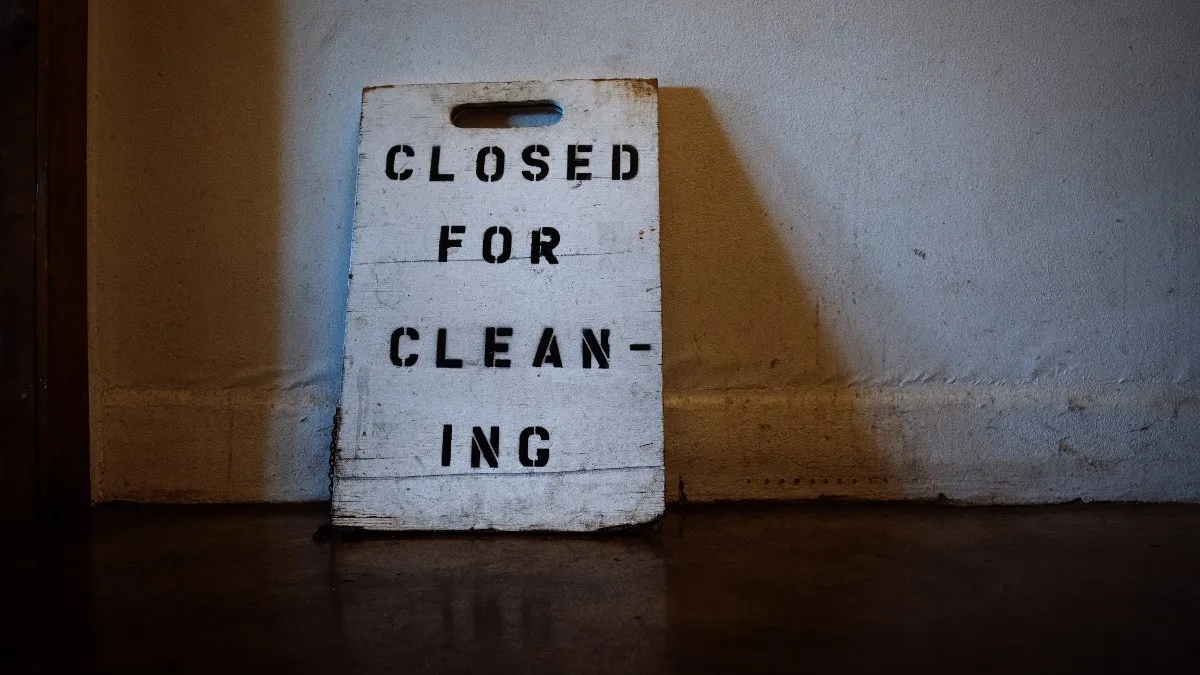As schools reopen to varying degrees during the coronavirus pandemic, the cleanliness of high-traffic, high-touch areas are a focus of concern. Cafeterias, bathrooms, hallways and buses will all have to be scrubbed regularly — and at a great expense to districts.
According to June estimates from AASA, The School Superintendents Association, and the Association of School Business Officials International (ASBO), the average school district will spend an additional $1.8 million on health and safety measures to reopen. The joint document describes an average district experiencing that cost as having "3,659 students, 8 school buildings, 183 classrooms, 329 staff members, and 40 school buses (transporting at 25% capacity, or 915 students, to comply with recommended social distancing guidelines)."
Chad Wilson, superintendent of East Valley Institute of Technology in Mesa, Arizona, said his school — which serves juniors and seniors — will pay more for health-related safety precautions and cleaning this year, but that it is imperative to bring kids back into the classroom.
“We are asking everyone to treat each other as if they all have the virus,” he said. “With the age that they are, a lot of them will be asymptomatic. We will be regularly sanitizing high-touch areas like restrooms and doorknobs, and we expect the students to sanitize their hands.”
Focusing on high-touch areas
The career and technology education institute has contracted with a janitorial service to sanitize the hallways midday, Wilson said. Students will also be expected to sanitize shared tools after each class, and custodial staff will use recently purchased vapor-spraying sanitizing machines that send a fog of disinfectant into areas not typically accessible by hand cleaning.
“It is, and will continue to be, incredibly financially challenging,” said Wilson, who has also served as a traditional high school principal. “My heart goes out to all the traditional schools. We are all in a financially difficult situation. The districts will do the best they can, but the revenue isn’t going to match the expenditures.”
As a CTE school, it is difficult to serve students by remote learning, Wilson said. A poll issued by the school found 96% of parents and students want to go back to the classroom.
“We partner with 10 traditional schools, and not all schools are doing the same thing,” he said. “But the majority will offer some form of on-campus learning, and all will be dealing with the same challenges.”
Electrostatic misting machines
David Petrash, owner of City Wide of Southern Arizona, a building maintenance management company in Tuscon, has fielded dozens of calls from schools hoping to reopen this fall.
“Right now, they are in a limbo/panic mode,” said Petrash, who has several school clients. “Whether they open or not, there is a set of CDC guidelines they are supposed to follow, and we have become their de facto expert on that.”
The company offers electrostatic cleaning, which is proving popular not just with schools but also in other commercial business spaces. Buses can quickly be sanitized after each ride with small, hand-held, battery-powered electrostatic spray guns that emit a mist. The machines add a positive electric charge to the cleaning formula, which is then attracted to negatively charged surfaces.
It’s important to understand the disinfectant only kills what is on the surfaces at the time the spray is applied, Petrash said. It doesn’t continue to kill the virus for hours. Once someone else comes along and contaminates the surface, it is no longer sanitary.
“It isn’t a time-release thing,” he said.
His firm also offers a variety of other services ranging from supplying districts with equipment school staff can use themselves to sending crews in to do the cleaning. It also helps schools find hand sanitizer, disinfectant wipes and masks — all gear that is currently in short supply.
“You are going to want to sanitize the high-touch points, the push and pull door bars, and have barriers like plexiglass between students in the library,” he said.
Prices range per service, but City Wide is trying to keep costs down for schools, he said.
“For some services, we are charging 2 cents a square foot because we want to partner with the schools and help them get back up and running,” he said. “But there is still a risk to our employees, so we have to account for that.”
If schools purchase their own electrostatic fogging spray unit, it will cost between $1,700 and $7,000, but it could take several weeks to receive them, he said.
Cleaning between cohorts
In New York, six Greek day schools are considering an a.m./p.m. schedule that would require a deep cleaning midday between cohorts, said Anastasios Koularmanis, director of Greek education for the Greek Orthodox Archdiocese of America.
Desktops will be cleaned regularly, and the network of schools is also looking for funds to purchase touchless sinks.
“You are talking about a lot of money,” he said. “I wish the government would release some of the funds earmarked for things to prevent school shootings, like security cameras, so we could use it now for health and safety.”
Koularmanis said one approach won’t work for every school, as each school has a different culture and different average age of staff. Schools in his system will have students eat lunch in the classroom and spend as much time as possible outdoors. They also won’t have school on Fridays so more deep cleaning can be done.
“It’s going to be difficult to open up adhering to CDC guidelines,” he said, but he believes the reopening of schools is important.
“A school is not just a school,” he said. “We are looking at it as academic, but what we need to see is that we educate the whole child. We need to worry about the districts that are financially disadvantaged because those children really need that classroom time. If they don’t get it, school closures will really have a trickle-down effect.”





















